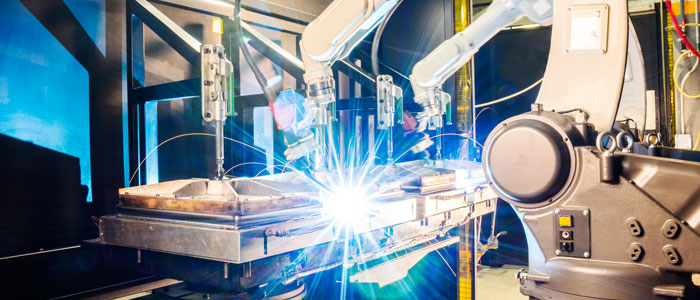 Technology has been replacing workers ever since the Industrial Revolution. But today’s rapid-fire digital changes are making workers especially nervous. And for good reason. Robots and artificial intelligence (A.I.) are being “hired” by a growing number of companies.
Technology has been replacing workers ever since the Industrial Revolution. But today’s rapid-fire digital changes are making workers especially nervous. And for good reason. Robots and artificial intelligence (A.I.) are being “hired” by a growing number of companies.
By March of this year, 34 employees at a Japanese insurance company will have been replaced by an A.I. system. It’s based on IBM’s famous Watson. Fukoku Mutual Life Insurance says their new Watson Explorer will be able to handle knowledge-based data analysis far faster than humans. In fact, they predict a 30% boost in productivity.
The A.I. system will determine insurance payout amounts, by reviewing claims-related hospital records and other documents. These determinations will take into account each patient’s injury data and medical history as well as the treatment procedures they received. Claims processing will move much faster, although real humans will still be needed to complete the payment process.
Fukoku is not alone. Three more Japanese insurance companies and one in Israel are also working to reduce their human workforces. People and paper will be replaced with bots and machine learning.
Reports vary, but Fukoku is supposedly spending between $1.7 million and $2.36 million on their switch to A.I. They expect to recoup their investment in less than two years. They will save dramatically, thanks to eliminating salaries and benefits formerly paid to the “downsized” white collar employees. Instead, they will pay only about $128,000 to $177,000 per year to maintain their new automated system.
Computer World says the news about Fukoku “is likely to continue to validate fears that robots and A.I. are putting people out of work. With A.I. systems making steady advancements that enable them to increasingly learn on their own, make decisions and understand human behavior, companies are widely expected to use the technology to sidestep human workers and get work done without needing to pay salaries and provide health care or vacation time.”
Forrester Research predicts that robots and A.I. will fill as many as 6% of American jobs by 2021. They say these are likely to be positions such as taxi drivers, truck drivers, hotel front desk and other types of customer service positions. But manufacturing jobs are also disappearing. Workers are being replaced by robots and other forms of production automation.
Increasing automation has been a hot topic within the workers’ comp arena for the past couple of years. These concerns have typically focused on workforce size. That’s because employer premiums are based on the number of employees as well as their type of work. For employers, reducing the labor force may save money on premiums in the short term, but could also lead to a smaller, less competitive insurance market and, therefore, higher premiums. But there’s another question: with fewer workers on-site, might there also be fewer injuries? And, therefore, fewer workers’ comp claims?
Analysts say not necessarily. At least when it comes to knowledge based jobs. As an article in the Harvard Business Review points out, “Almost all jobs have major elements that – for the foreseeable future – won’t be possible for computers to handle. And yet, we have to admit that there are some knowledge-work jobs that will simply succumb to the rise of the robots.”
But the nature of these jobs will change, says business analyst Judith Hurwitz. She told Computer World that “machines cannot operate in isolation from human judgment. The best use of these analytics systems is to work in collaboration with those that have advanced knowledge of their area and can be supported by smart systems." So new technology jobs will emerge as humans learn to work in tandem with so-called smart systems.
How will these workforce changes affect the types of on-the-job injuries? In many industries, automated machines are taking over repetitive tasks. These are one of the leading causes of job-related injuries. On the other hand, as long as there are humans in the workplace, slip-and-fall injuries will continue to occur.
Artificial intelligence may already be smart enough to understand human behavior. Bots and A.I. may be able to conduct some types of communication, a vital part of an injured worker’s recovery process. But that intelligence isn’t physical. No robot (as yet) can handle tasks such as physical therapy because they don’t have a human touch. Or human insight.
Consider a live physical therapist, working with an injured employee right at their jobsite. They are armed with the kind of medical data and injury assessment an A.I. “worker” could understand. But they have the extraordinary advantage of seeing the worker in place. Seeing exactly what tasks her job requires. How she performs them. And her employer-specific working environment.
These insights enable the on-site PT to provide 100% personalized treatment. And identify needed ergonomic changes. Being on-site also enables them to communicate formally and informally. They can chat with the injured worker during sessions, of course. But they can also stop by to update the workers’ comp manager. It’s a situation that streamlines recovery. And the one-on-attention encourages injured workers to focus on getting back to work faster.
Perhaps someday we’ll be able to build A.I.robots that can mimic a physical therapist. Or maybe not. For now, it seems the workers’ comp landscape will remain much the same. But we’ll have to keep a watchful eye on automation. It’s here to stay.
Locate one of our nationwide OnSite Physio therapists now.
PO BOX 160070
Altamonte Springs, Fl 32716
referrals@physnet.com
Phone: 866-907-4797
CONTACT US|
©2021 PhysNet, LLC. All Rights Reserved.
|
 |